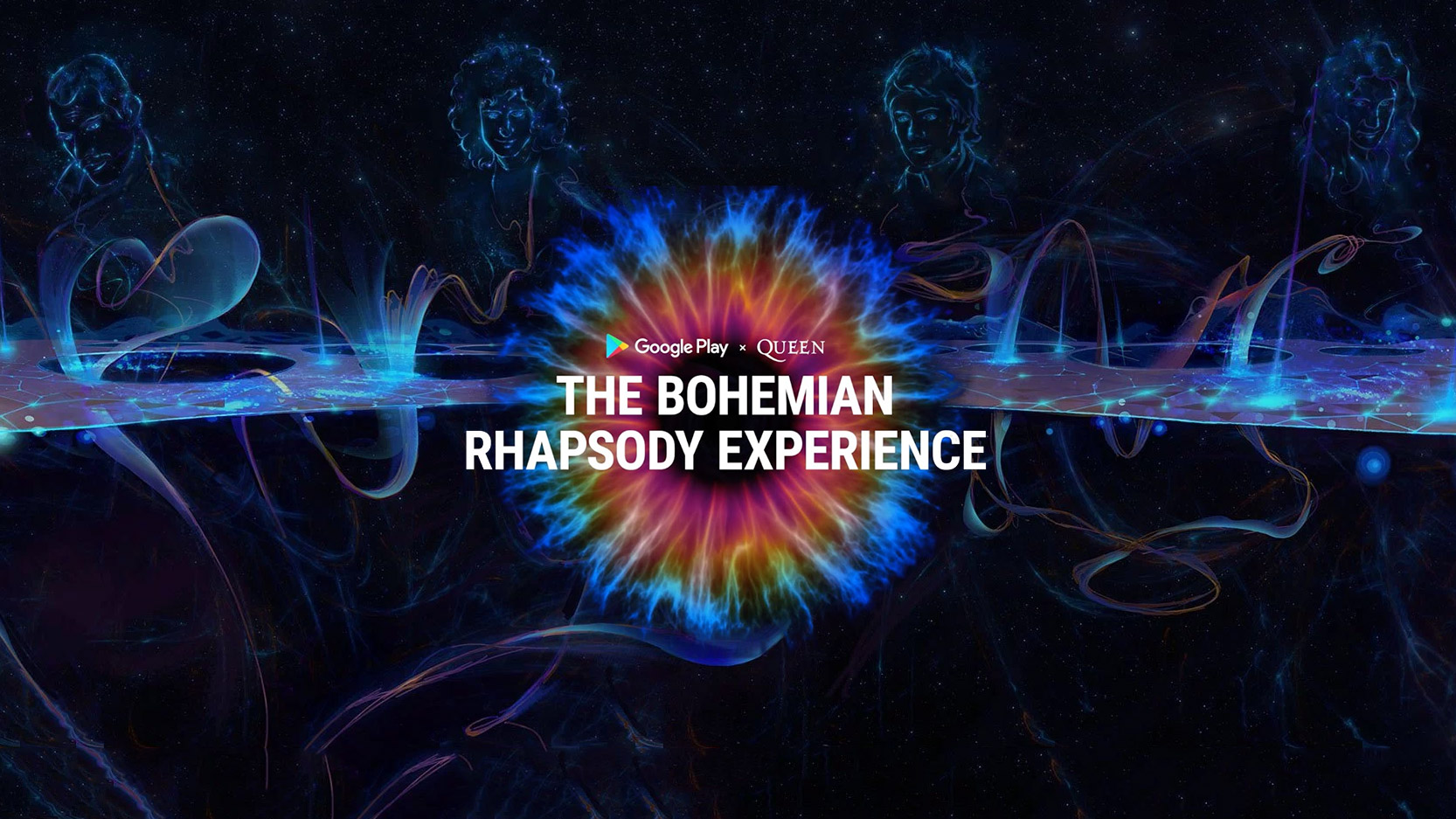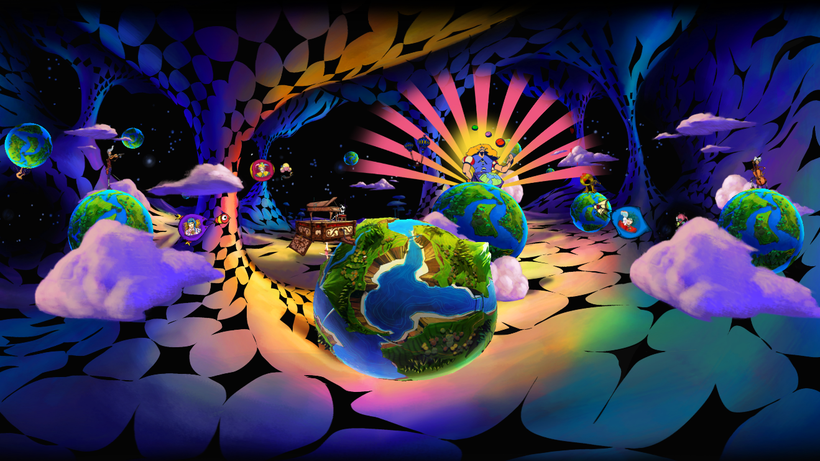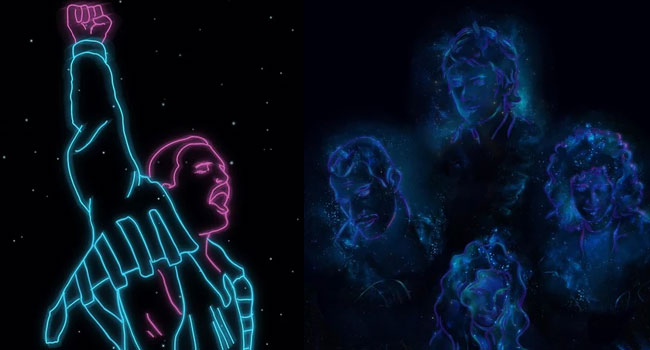Trending
Opinion: How will Project 2025 impact game developers?
The Heritage Foundation's manifesto for the possible next administration could do great harm to many, including large portions of the game development community.

Featured Blog | This community-written post highlights the best of what the game industry has to offer. Read more like it on the Game Developer Blogs or learn how to Submit Your Own Blog Post
Working in Bohemian Rhapsody Experience helped me clarify some personal ideas about what makes VR compelling and what ingredients can help us make more powerful virtual reality content. In this article I will group some of these ideas into 3 lessons.


The Bohemian Rhapsody Experience is a virtual reality music video for Google Cardboard based on Queen's classic song; produced by Enosis VR in collaboration with Google and Queen, and released last September with some great reviews. David Deal from SuperHype blog called the experience "a more compelling glimpse of the future of VR than any demos and new products coming out of Silicon Valley recently," and used the piece as a prime example of the kind of content that will make Virtual Reality great.
I worked with Enosis VR as Art Director to help bring their prototype to a high quality polished experience. Working in this project was in itself a great experience that taught quite a few things about VR and helped me clarify some personal ideas about what makes VR compelling and what ingredients can help us make more powerful virtual reality content. In this article I will group some of these ideas into 3 lessons.

At its core, engaging VR is not about storytelling, it is not about interactivity, and it is not about agency. It is about providing powerful experiences. There is a lot of talk in the industry about VR being a storytelling medium on one hand, and about being an interactive medium that can give us a unique sense of agency on the other. I've seen compelling examples in VR of both storytelling and interactivity, but one thing that becomes clear to me after working in Bohemian Rhapsody is that at its core VR is not about telling stories or about providing agency but about providing experiences.
If you think of some of the most memorable experiences in your own life -from being present at the birth of your child, to witnessing a natural disaster - you know that powerful experiences do not necessarily depend on having agency or being told a story.
Bohemian Rhapsody has some pieces of stories and a little bit of agency -as your gaze triggers specific animations and events- but its power lies in letting you experience a powerful piece of music in a new way, in letting you experience a series of fantastic environments that enhance your connection to a powerful song.
I am not saying that there is no room in VR for storytelling, interactivity, and agency. They all can be important tools to help us provide powerful experiences, but none of them is essential. There are in fact many different kinds of experiences that can be powerful, some because of the sense of agency they provide, like Tilt Brush, and some despite having very limited agency, like the VR documentary 6x9. The same goes with storytelling. Stories are part of the way we understand the world around us, but that doesn't mean that all the experiences that have impacted us came with a story behind them. Have you witnessed a big accident? We create stories about powerful experiences like these to remember and assimilate them; the story comes after, not before.
Storytelling, interactivity, and agency are all tools that help us create better experiences, but none of them is indispensable.

Powerful experiences connect with our emotions, they arise our feelings. An experience that doesn't trigger any emotions is a dull experience, neither memorable nor engaging. It doesn't need to be any specific emotion. It could be a sense of creativity and power like in Tilt Brush; it could be a sense of empathy like in the winning documentary "Notes on Blindness: Into Darkness"; or a meditative sense of awe like in Shape Space VR "Zen Parade." What matters when you are creating a powerful experience is that all the elements in the experience work together to reinforce the emotions you are after.
In developing Bohemian Rhapsody we were lucky to have as a starting point a masterpiece of classical rock that already connects emotionally to many people. Our challenge was to create environments, characters, and animations that broadened and reinforced the emotions already present in the music.
In another article, "The 5 Ingredients of Successful Games and VR Experiences" I talked about Themes, and how Themes when done well can help to tie all the elements of your experience and make it easier to connect emotionally with your player. In the case of Bohemian Rhapsody, the song acted as our unifying Theme, and as any great Theme it included already an attitude and a point of view about the world that made it easier to come up with all the other pieces of the puzzle.
You don't need to base your experience on a powerful song, but I believe it is essential to find a Theme with a specific point of view to tie your experience together and connect with your audience emotionally.

The ability of VR to give us a sense of presence -that gut feeling of really being in front of what we are seeing- is what makes us talk about VR content in terms of experiences. But that sense of presence is not the same in all VR pieces.
Richard Skarbez, a PhD candidate at the University of North Carolina at Chapel Hill, has found in a series of studies that Presence in VR is created by two key components: immersion and coherence. Immersion refers to the feeling of being in another place, and it comes with the medium. When you look through your VR viewer you already feel like you are inside an environment. Coherence however, is what makes us feel that the place we are surrounded by is real. According to Skarbez' studies, both components are essential to create a sense of presence. If either on them is missing, the illusion brakes.
The interesting thing is that the sense of presence does not depend on the environment matching reality. In fact, when the environment is realistic our expectations are much higher. There are a lot of subtleties about how reality works -lighting, materials, natural motion, natural behavior- that we expect when looking at a realistic environment, and if something is not working as we know it should, the coherence and the sense of presence breaks (you can listen to a great interview of Richard Skarbez and his findings in this interview by Kent Bye from the Voices of VR podcast).
When developing Bohemian Rhapsody we confirmed that highly stylized content did not break the sense of presence. Even when we mixed 2D and 3D characters and environments, we found that as long as the assets came together in a coherent manner we still could achieve a sense of presence. To unify 2D and 3D assets we used mostly two things: a unified perspective and consistent flat lighting. Whenever we introduced other kinds of lighting, or the perspective painted in the 2D assets was different from the 3D camera perspective, the illusion of a coherent world and the sense of presence broke.

Also, although your experience needs to be consistent, consistency can be fluid. The Bohemian Rhapsody Experience contains different scenes with radically different styles as you can see in the illustrations shown in this article. However, each scene was internally coherent, and each scene was consistent with the song, the primary unifying Theme. Since Bohemian Rhapsody contains different music styles, the different visual styles didn't clash but supported the complexity of the song. I believe the same could work with other strong Themes. As long as each scene is internally consistent and consistent with a unifying Theme, you can have different treatments within the same piece without breaking the unity of the experience as a whole.
To further strengthen the connection between scenes we created an overall narrative of Freddy Mercury's journey to self-realization. This narrative, although not always obvious, worked as a secondary Theme that allowed us to establish connections between the different parts of the experience.
At its core, engaging VR is not about storytelling, it is not about interactivity, and it is not about agency. It is about engaging experiences. Although storytelling, interactivity, and agency can all help us create powerful experiences, they are just tools. None of them is indispensable to make engaging VR content. Some of the most powerful experiences in our lives involve very little agency, and some of them have very little story behind. All powerful experiences however connect to our emotions and feel real. Whatever tools we decide to use, storytelling, interactivity, or agency, we need to make sure that we connect emotionally to our users, and we need to make sure the sense of presence is preserved by making the experience as a whole coherent.
You can see more about how to create engagement in Games and VR experiences at FelipeLara.net.
Read more about:
Featured BlogsYou May Also Like